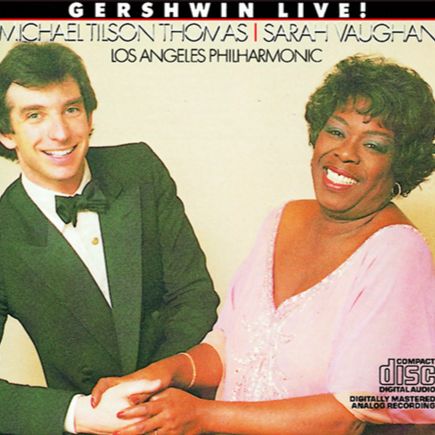Fascinating Rhythm: énergie moderne et passerelle entre jazz et Broadway
Écrite en 1924 par George Gershwin, sur des paroles de son frère Ira, Fascinating Rhythm fait son entrée remarquée dans la comédie musicale Lady Be Good, portée à Broadway par Fred et Adele Astaire aux côtés de Cliff Edwards. Deux ans plus tard, en avril 1926, le duo Astaire enregistre une version à Londres avec George Gershwin lui-même au piano, scellant l’une des premières grandes réussites du songwriting américain.
Dès sa création, Fascinating Rhythm s’impose par son audace rythmique et son inventivité formelle. Son effervescence musicale devient le reflet sonore des Années folles, période de bouleversements culturels, sociaux et artistiques, dont le jazz fut l’un des principaux catalyseurs.
Au-delà de ses qualités musicales, Fascinating Rhythm a joué un rôle déterminant dans la diffusion du langage jazz dans le théâtre musical. Interprété tant sur les scènes de Broadway que dans les clubs de jazz, le morceau a contribué à abolir les frontières entre musique populaire et culture savante, entre divertissement et innovation.
L’histoire discographique de la chanson illustre aussi sa longévité exceptionnelle. Tony Bennett, qui l’avait enregistrée pour la première fois en 1949, en a livré une nouvelle version en 2018 en duo avec Diana Krall. Ce réenregistrement, réalisé près de soixante-dix ans après le premier, détient aujourd’hui le record mondial Guinness du plus long intervalle entre deux versions du même titre par un même artiste.
Ici, l’interprétation de « Fascinating Rhythm » enregistrée les 1er et 2 février 1982, en direct à l’auditorium Dorothy Chandler de Los Angeles, pour l’album « Gershwin Live! », par Sarah Vaughan, accompagnée par l’orchestre philarmonique de Los Angeles dirigée par Michael Tilson Thomas.
Vaughan et Tilson Thomas avaient concocté des soirées Gershwin pendant huit ans avant cette représentation, de sorte que la chanteuse et le chef d’orchestre se connaissaient depuis longtemps. Tilson Thomas vouait apparemment un culte à Vaughan et la laissait totalement libre de ses mouvements dans leurs collaborations. En conséquence, il s’agit d’un voyage de diva qui se pâme, s’époumone, hulule et vibre fortement, l’un des enregistrements les plus excessifs qu’elle n’ait jamais réalisé.
Bien sûr, sa voix et la liberté avec laquelle elle la manipule sont des merveilles, et on ne peut s’empêcher d’apprécier la virtuosité du scat sur « The Man I Love ». Mais par goût, les acrobaties vocales -aidées et encouragées par la direction affectueuse de Tilson Thomas sur les diagrammes ultra-plaisants de Marty Paich- étirent souvent les airs de Gershwin de façon presque grotesque.
Deux airs (« Sweet and Low Down » et « Do It Again ») sont interprétés seuls, avec l’accompagnement enthousiaste de Tilson Thomas au piano, dans un style classique et sans balancement. Le trio de Vaughan (George Gaffney, au piano, Andy Simpkins à la basse et Harold Jones à la batterie) est essentiellement là pour nous accompagner.
Fascinating Rhythm: energía moderna y puente entre el jazz y Broadway
Escrita en 1924 por George Gershwin, con letra de su hermano Ira, Fascinating Rhythm hizo su entrada triunfal en el musical Lady Be Good, llevado a Broadway por Fred y Adele Astaire junto a Cliff Edwards. Dos años después, en abril de 1926, el dúo Astaire grabó una versión en Londres con el propio George Gershwin al piano, sellando uno de los primeros grandes éxitos del songwriting estadounidense.
Desde su estreno, Fascinating Rhythm se impuso por su audacia rítmica y su inventiva formal. Su efervescencia musical se convirtió en el reflejo sonoro de los Años locos, una época de profundos cambios culturales, sociales y artísticos, en la que el jazz fue uno de los principales motores.
Más allá de sus cualidades musicales, Fascinating Rhythm desempeñó un papel decisivo en la difusión del lenguaje del jazz en el teatro musical. Interpretada tanto en los escenarios de Broadway como en clubes de jazz, la pieza contribuyó a romper las fronteras entre música popular y cultura académica, entre entretenimiento e innovación.
La historia discográfica de la canción también ilustra su longevidad excepcional. Tony Bennett, que la había grabado por primera vez en 1949, ofreció una nueva versión en 2018 en dúo con Diana Krall. Esta regrabación, realizada casi setenta años después de la original, ostenta hoy el récord Guinness mundial por el mayor intervalo entre dos versiones del mismo tema grabadas por un mismo artista.
Aquí, la versión de « Fascinating Rhythm » grabada en directo los días 1 y 2 de febrero de 1982 en el Dorothy Chandler Auditorium de Los Ángeles, para el álbum « Gershwin Live! », por Sarah Vaughan, acompañada por la Orquesta Filarmónica de Los Ángeles dirigida por Michael Tilson Thomas. Vaughan y Tilson Thomas llevaban ocho años preparando veladas de Gershwin antes de esta actuación, por lo que la cantante y el director se conocían desde hacía mucho tiempo. Al parecer, Tilson Thomas adoraba a Vaughan y le daba total libertad de movimientos en sus colaboraciones. Como resultado, este es un viaje de diva con desvanecimiento, desmayo, gritos y fuertes vibraciones, una de las grabaciones más excesivas que ha hecho nunca.
Por supuesto, su voz y la libertad con que la manipula son una maravilla, y no se puede dejar de apreciar el virtuosismo del scat en « The Man I Love ». Pero para gustos, las acrobacias vocales -ayudadas e instigadas por la afectuosa dirección de Tilson Thomas sobre los diagramas ultraplacenteros de Marty Paich- a menudo estiran las melodías de Gershwin de forma casi grotesca.
Dos melodías (« Sweet and Low Down » y « Do It Again ») son interpretadas solas, con el entusiasta acompañamiento al piano de Tilson Thomas, en un estilo clásico y libre de vaivenes. El trío de Vaughan (George Gaffney al piano, Andy Simpkins al bajo y Harold Jones a la batería) está esencialmente ahí para acompañarnos.
Fascinating Rhythm: energia moderna e ponte tra jazz e Broadway
Scritta nel 1924 da George Gershwin, con testo del fratello Ira, Fascinating Rhythm fece il suo debutto trionfale nel musical Lady Be Good, portato a Broadway da Fred e Adele Astaire insieme a Cliff Edwards. Due anni più tardi, nell’aprile del 1926, il duo Astaire ne registrò una versione a Londra con lo stesso George Gershwin al pianoforte, sancendo uno dei primi grandi successi del songwriting americano.
Fin dalla sua creazione, Fascinating Rhythm si impone per l’audacia ritmica e l’inventiva formale. La sua effervescenza musicale diventa il riflesso sonoro dei ruggenti anni Venti, un periodo di profondi sconvolgimenti culturali, sociali e artistici, di cui il jazz fu uno dei principali protagonisti.
Al di là delle sue qualità musicali, Fascinating Rhythm ha svolto un ruolo determinante nella diffusione del linguaggio jazzistico nel teatro musicale. Eseguito tanto sui palcoscenici di Broadway quanto nei jazz club, il brano ha contribuito ad abbattere le barriere tra musica popolare e cultura colta, tra intrattenimento e innovazione.
La storia discografica della canzone testimonia anche la sua eccezionale longevità. Tony Bennett, che la incise per la prima volta nel 1949, ne ha proposto una nuova versione nel 2018 in duo con Diana Krall. Questa reincisione, realizzata quasi settant’anni dopo la prima, detiene oggi il record mondiale Guinness per il più lungo intervallo tra due versioni dello stesso brano incise dallo stesso artista.
Qui, l’interpretazione di « Fascinating Rhythm » registrata dal vivo l’1 e il 2 febbraio 1982 al Dorothy Chandler Auditorium di Los Angeles, per l’album « Gershwin Live! », da Sarah Vaughan, accompagnata dalla Los Angeles Philharmonic Orchestra diretta da Michael Tilson Thomas.
Vaughan e Tilson Thomas avevano organizzato serate Gershwin durante otto anni prima di questa esibizione, quindi la cantante e il direttore d’orchestra si conoscevano da tempo. Pare che Tilson Thomas venerasse Vaughan e le lasciasse piena libertà di movimento nelle loro collaborazioni. Di conseguenza, questo è un viaggio da diva, fatto di svenimenti, urla, gridi e vibrazioni ad alta voce, una delle registrazioni più eccessive che abbia mai fatto.
Certo, la sua voce e la libertà con cui la manipola sono meraviglie, e non si può non apprezzare il virtuosismo scat di « The Man I Love ». Ma le acrobazie vocali -aiutate e favorite dall’affettuosa direzione di Tilson Thomas e dai diagrammi estremamente piacevoli di Marty Paich- spesso allungano le melodie di Gershwin in modo quasi grottesco.
Due brani (« Sweet and Low Down » e « Do It Again ») sono eseguiti da soli, con l’entusiastico accompagnamento pianistico di Tilson Thomas, in uno stile classico e senza slanci. Il trio di Vaughan (George Gaffney al pianoforte, Andy Simpkins al basso e Harold Jones alla batteria) è essenzialmente lì per accompagnarci.
Fascinating Rhythm: modern energy and a bridge between jazz and Broadway
Written in 1924 by George Gershwin, with lyrics by his brother Ira, Fascinating Rhythm made a striking debut in the musical Lady Be Good, brought to Broadway by Fred and Adele Astaire alongside Cliff Edwards. Two years later, in April 1926, the Astaire duo recorded a version in London with George Gershwin himself at the piano, marking one of the first major successes of American songwriting.
From its very premiere, Fascinating Rhythm stood out for its rhythmic boldness and formal inventiveness. Its musical effervescence became the sonic reflection of the Roaring Twenties—a time of sweeping cultural, social, and artistic change, with jazz as one of its main driving forces.
Beyond its musical qualities, Fascinating Rhythm played a key role in spreading the language of jazz within musical theatre. Performed both on Broadway stages and in jazz clubs, the piece helped blur the lines between popular music and high culture, between entertainment and innovation.
The song’s discographic history also illustrates its remarkable longevity. Tony Bennett, who first recorded it in 1949, released a new version in 2018 as a duet with Diana Krall. This re-recording, made nearly seventy years after the original, currently holds the Guinness World Record for the longest interval between two versions of the same song by the same artist.
Here, the interpretation of « Fascinating Rhythm », recorded on February 1 and 2, 1982, live at the Dorothy Chandler Pavilion in Los Angeles for the album Gershwin Live!, features Sarah Vaughan accompanied by the Los Angeles Philharmonic Orchestra conducted by Michael Tilson Thomas.
Vaughan and Tilson Thomas had been crafting Gershwin-themed evenings for eight years prior to this performance, so the singer and the conductor had a long-standing familiarity. Tilson Thomas was reportedly a devoted admirer of Vaughan and gave her complete freedom in their collaborations. As a result, this recording is a diva’s journey—swooning, belting, wailing, and vibrating with intensity—one of the most extravagant performances she ever recorded.
Of course, her voice and the freedom with which she wields it are wonders to behold, and one cannot help but admire the virtuosic scat singing on « The Man I Love ». Yet, taste-wise, the vocal acrobatics—supported and encouraged by Tilson Thomas’s affectionate conducting over Marty Paich’s ultra-pleasing arrangements—often stretch Gershwin’s tunes to near-grotesque proportions.
Two songs, « Sweet and Low Down » and « Do It Again », are performed solo, accompanied enthusiastically by Tilson Thomas on piano in a classical, swing-free style. Vaughan’s trio (George Gaffney on piano, Andy Simpkins on bass, and Harold Jones on drums) serves primarily as a supporting presence throughout the performance.


